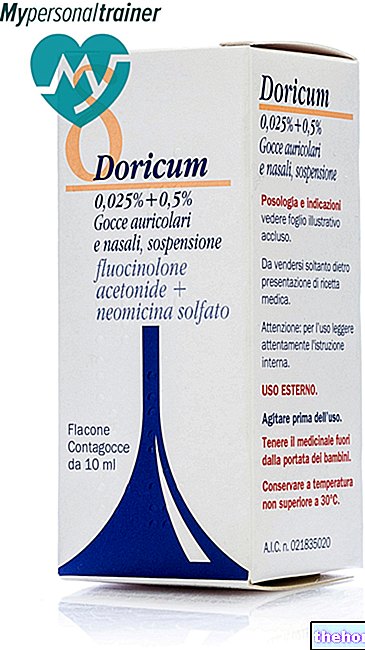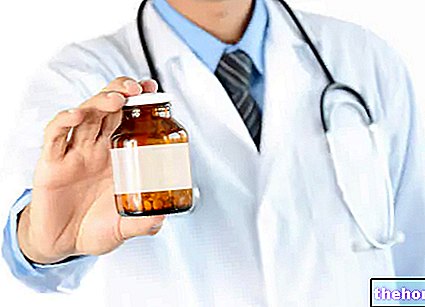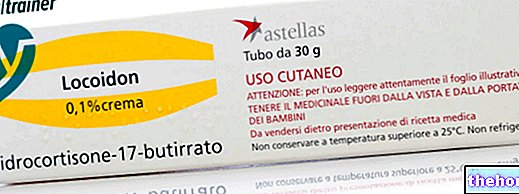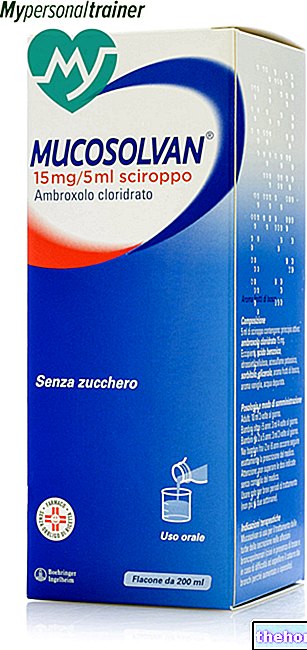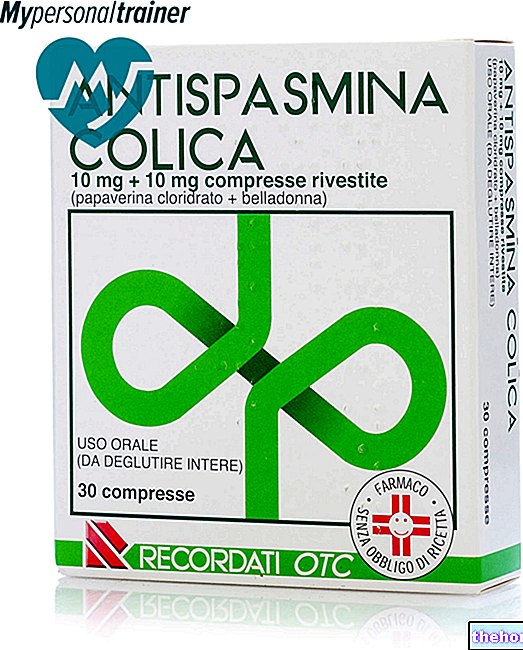Active ingredients: Josamycin (Josamycin propionate)
Iosalide 500 mg dispersible tablets
Iosalide 1 g dispersible tablets
Iosalide package inserts are available for pack sizes: - Iosalide 500 mg dispersible tablets, Iosalide 1 g dispersible tablets
- Iosalide 500 mg film-coated tablets
Indications Why is Iosalide used? What is it for?
Iosalide contains the active substance josamycin, a medicine belonging to a group of antibiotics called 'macrolides', which work against germs that cause infections.
Iosalide is indicated in infections caused by germs sensitive to josamycin (germs against which josamycin is effective), and in particular in:
- odontostomatological infections (of the mouth and teeth)
- ear, nose and throat infections
- respiratory tract infections
- superficial soft tissue infections (located under the skin)
- mammary gland infections
- localized infections in the genitals
- biliary tract infections.
Iosalide is also indicated if you are allergic to penicillins and have infections sensitive to josamycin.
Talk to your doctor if you don't feel better or if you feel worse.
Contraindications When should Iosalide not be used
Do not take hyosalide
- if you are allergic to josamycin or any of the other ingredients of this medicine
- if you are allergic to josamycin-like substances
- if you suffer from impaired function of the liver and biliary tract (severe hepatobiliary insufficiency)
- if you suffer from phenylketonuria (a hereditary disease which is incompatible with the aspartame contained in this medicine. See section "Iosalide contains aspartame").
Precautions for use What you need to know before taking Iosalide
Talk to your doctor or pharmacist before taking Iosalide.
- If you suffer from liver dysfunction (liver disease) or biliary tract dysfunction. Your doctor may ask you to check your liver function through tests.
- If you are taking medicines to treat allergies (antihistamines, such as terfenedine or astemizole), see the section "Other medicines and Iosalide"
Although no reports have yet been received, it cannot be excluded that treatment, especially if prolonged, with josamycin, may cause infections of resistant germs, including fungi. In this case, your doctor will stop the treatment and prescribe a "suitable therapy."
Children and adolescents
Iosalide can be used in the pediatric population.
In very early childhood, the product should be administered in cases of real need and under medical supervision.
Interactions Which drugs or foods can modify the effect of Iosalide
Tell your doctor or pharmacist if you / your child are taking, have recently taken or might take any other medicines.
In particular, tell your doctor if you / your child are taking:
- antihistamines containing terfenadine and astemizole (medicines to treat allergies). The concomitant use of Iosalide and these medicines is not recommended, as there may be an increase in their quantity in the blood which can lead to the onset of a critical cardiac arrhythmia (alteration of the rhythm of the heart)
- ergotamine alkaloids (medicines used for headache), as an increase in vasoconstriction (decrease in the diameter of blood vessels) may occur. If you experience signs and symptoms of ergotamine intoxication (e.g. movement disturbances, tremors seizures, fever, vomiting and vasoconstriction), contact your doctor immediately, who will stop the josamycin therapy and carry out the appropriate treatment
- immunosuppressants such as cyclosporine and tacrolimus (medicines that reduce the activity of the immune system), as there may be an increase in the amount of these medicines in the blood, which can cause kidney problems
- triazolam (medicine used to treat insomnia), as an increase in its effect and therefore an increase in sleepiness may occur
- bromocriptine mesylate (medicine used to treat Parkinson's and to inhibit prolactin) as its effect may increase. This can cause drowsiness, dizziness, movement disturbances, etc.
- oral anticoagulants such as warfarin and its vitamin K antagonist derivatives (medicines used to thin the blood), as josamycin increases their effect.
Also, tell your doctor if your baby is taking:
- theophylline (medicine used to treat asthma), as the simultaneous use of hyosalide and theophylline in children causes an increase in theophylline levels in the blood.
If your child experiences theophylline toxicity (gastrointestinal disturbances, heart rhythm disturbances or movement disturbances), contact your doctor immediately, who will adjust the theophylline dose accordingly if necessary.
Iosalis with food and drink
Take the Iosalide tablets between meals (see section "How to take Iosalide").
Warnings It is important to know that:
Pregnancy and breastfeeding
If you are pregnant or breast-feeding, think you may be pregnant or are planning to have a baby, ask your doctor or pharmacist for advice before taking this medicine.
Pregnancy
There are limited data on the use of josamycin in pregnancy. Therefore, if you are pregnant and suspect you may be pregnant, your doctor will decide whether you can use this medicine, after evaluating the risks and benefits of therapy.
Feeding time
Josamycin passes into breast milk, so if you are breast-feeding, consult your doctor before taking this medicine.
Driving and using machines
No adverse effects on driving and using machines have been demonstrated.
Iosalide contains aspartame
This medicine contains a source of phenylalanine. It can be harmful if you and / or your baby have phenylketonuria (see section "Do not take Iosalide").
Dose, Method and Time of Administration How to use Iosalide: Posology
Always take this medicine exactly as your doctor or pharmacist has told you. If in doubt, consult your doctor or pharmacist.
Take the Iosalide tablets between meals.
Adults
The recommended dose is 1.5-2 g (your doctor will tell you the number of tablets to take) per day to be taken throughout the day. In severe cases, your doctor may increase the dose up to 3 g (6 tablets per day). 500 mg or 3 tablets of 1 g) and above.
Use in children
The recommended dose is 40-50 mg / kg of body weight per day to be taken in small amounts throughout the day.
In very early childhood, the product should be administered in cases of real need and under medical supervision.
Duration of treatment
Your doctor will advise you on the appropriate duration of treatment. Treatment should be continued for more than 48 hours after symptoms disappear and after temperature normalization.
Method of administration
You can take Iosalide dispersible tablets in two ways:
- Swallow the tablet whole or after breaking it with water.The score line on the tablet is intended to make it easier to break and swallow the tablet more easily and not to divide it into equal doses.
or
- Dissolve the tablet in at least 20 ml of water (half a cup). So mix well before drinking.
If you forget to take Iosalide
Do not take a double dose to make up for a forgotten tablet.
If you stop taking Iosalide
If you have any further questions on the use of this medicine, ask your doctor or pharmacist.
Overdose What to do if you have taken too much Iosalide
Taking too much josamycin can cause stomach and bowel upset such as nausea and diarrhea.
In case of accidental ingestion / intake of an excessive dose of Iosalis, notify your doctor immediately or go to the nearest hospital.
Side Effects What are the side effects of Iosalide
Like all medicines, this medicine can cause side effects, although not everybody gets them.
Undesirable effects are listed below according to the following frequency:
Not known (frequency cannot be estimated from the available data)
Side effects affecting the mouth, stomach and intestines
- abdominal distension (swollen belly), stomatitis (inflammation of the mouth), nausea, vomiting, abdominal discomfort (stomach pain), diarrhea.
Undesirable effects affecting metabolism and nutrition
- reduced appetite.
Side effects caused by germs (infections)
- pseudomembranous colitis (severe inflammation of the intestine).
Undesirable effects affecting the skin and mucous membranes
- severe skin lesions such as Stevens-Johnson syndrome and toxic epidermal necrolysis
- skin diseases characterized by the appearance of reddish spots, blisters and blisters, such as purpura, bullous dermatitis, erythema multiforme, hives, skin reactions, angioedema (swelling of the skin and mucous membranes).
Undesirable effects affecting the immune system
- anaphylactic reaction (severe allergic reaction).
Side effects affecting the liver
- alteration of liver function with possible cholestatic characteristics (alteration of the flow of bile acids).
- jaundice (yellowing of the skin and whites of the eyes).
Reporting of side effects
If you get any side effects, talk to your doctor. This includes any possible side effects not listed in this leaflet. You can also report side effects directly via the national reporting system at www.agenziafarmaco.gov.it/it/responsabili. By reporting side effects you can help provide more information on the safety of this medicine.
Expiry and Retention
Keep this medicine out of the sight and reach of children.
Do not take this medicine after the expiry date which is stated on the carton after EXP. The expiry date refers to the last day of that month.
Do not store above 25 ° C.
Do not throw any medicines via wastewater or household waste. Ask your pharmacist how to throw away medicines you no longer use. This will help protect the environment.
Other information
What Iosalide contains
Iosalide 500 mg dispersible tablets
- the active ingredient is: josamycin propionate (each tablet contains 533.83 mg of josamycin propionate equal to 500 mg of josamycin base)
- the other components: microcrystalline cellulose, hydroxypropylcellulose, sodium docusate, aspartame ("Iosalide contains aspartame"), anhydrous colloidal silica, magnesium stearate, strawberry flavor.
Iosalide 1 g dispersible tablets
- the active ingredient is: josamycin propionate (each tablet contains 1067.66 mg of josamycin propionate equal to 1 g of josamycin base)
- the other ingredients are: microcrystalline cellulose, hydroxypropylcellulose, sodium docusate, aspartame ("Iosalide contains aspartame"), colloidal anhydrous silica, magnesium stearate, strawberry flavor.
Description of what Iosalide looks like and contents of the pack
Iosalide is presented in oblong dispersible tablets with the inscription JOSA and the splitting line on one side and the inscription 500 0 1000 on the other, packed in blister packs. In box of 12 tablets.
Source Package Leaflet: AIFA (Italian Medicines Agency). Content published in January 2016. The information present may not be up-to-date.
To have access to the most up-to-date version, it is advisable to access the AIFA (Italian Medicines Agency) website. Disclaimer and useful information.
01.0 NAME OF THE MEDICINAL PRODUCT
DISPERSIBLE TABLETS IOSALIDE
02.0 QUALITATIVE AND QUANTITATIVE COMPOSITION
IOSALIDE 500 mg dispersible tablets
Each tablet contains: josamycin propionate 533.83 mg equal to 500 mg of josamycin base
IOSALIDE 1 g dispersible tablets
Each tablet contains: josamycin propionate 1067.66 mg equal to 1 g of josamycin base
Excipients: aspartame:
each 500 mg tablet contains 5.04 mg aspartame (see section 4.3 contraindications)
each 1 g tablet contains 10.09 mg of aspartame (see section 4.3 contraindications
For the full list of excipients, see section 6.1
03.0 PHARMACEUTICAL FORM
Dispersible tablets
04.0 CLINICAL INFORMATION
04.1 Therapeutic indications
Infections of the odontostomatological, ENT, respiratory tract, superficial soft tissues, mammary gland, genital area and biliary tract due to germs considered sensitive. Also indicated in subjects allergic to penicillins and carriers of infections sensitive to josamycin.
04.2 Posology and method of administration
Adults
The most common dosage for adults is 1.5-2 g per day spread over the course of the day. In severe cases, the dosage can be increased to 3 g or more.
Children
For children, the dosage is 40-50 mg / kg of body weight per day in refracted doses. In very early childhood, the product should be administered in cases of real need and under medical supervision.
Iosalis dispersible tablets can be taken in two ways:
1) Swallow the tablet whole or after breaking it with water.
2) Dissolve the tablet in at least 20 ml of water (half a cup). So mix well before drinking.
It is recommended to take it away from meals. Treatment should be continued for more than 48 hours after symptoms disappear and after temperature normalization.
04.3 Contraindications
Hypersensitivity to the active substance or to any of the excipients or to closely related substances from a chemical point of view.
The presence of aspartame contraindicates its use in patients with phenylketonuria.
Severe hepatobiliary insufficiency.
04.4 Special warnings and appropriate precautions for use
In patients with hepatic disorders, the plasma concentration of the drug may be elevated.
Josamycin should therefore be administered with caution to patients suffering from hepatic dysfunction.
It is recommended, as a general rule, to carry out liver function checks in subjects with hepatobiliary insufficiency being treated for more than 15 days. Although no reports of this have been received yet, it cannot be ruled out that treatment, especially if prolonged, with josamycin, as with other antibiotics, including those of the macrolide group, may give rise to the proliferation of resistant bacterial agents and fungi; in this case, the treatment will be interrupted and a "suitable therapy" instituted.
Concomitant administration of josamycin and antihistamines containing terfenadine or astemizole should be done with caution as josamycin delays the excretion of these drugs, which in turn can lead to critical cardiac arrhythmia (see section 4.5).
04.5 Interactions with other medicinal products and other forms of interaction
Josamycin can significantly alter the metabolism of antihistamines containing terfenadine and astemizole resulting in relative overdose. Therefore the concomitant use of josamycin and terfenadine is not recommended (see section 4.4).
An increase in serum levels of theophylline has been reported following administration of josamycin in children.
Theophylline concentrations may increase due to the prolongation of the half-life of the same. In case of theophylline toxicity occurs, the dose of theophylline should be adequately adjusted and controlled by evaluating the serum concentrations of theophylline.
Simultaneous use of ergotamine alkaloids can cause increased vasoconstriction. If signs and symptoms of ergotism occur, discontinue therapy with josamycin and intervene with adequate treatment, such as local application of heat and administration of vasodilators.
Co-administration of josamycin and cyclosporin / tacrolimus may cause cyclosporin / tacrolimus levels to rise to concentrations which may cause renal disorders. The plasma concentration of cyclosporine / tacrolimus should be monitored regularly.
Josamycin may increase the effect of triazolam in causing drowsiness. In the event of an overdose of triazolam a temporary suspension of the drug is recommended.
Josamycin can increase the action of bromocriptine mesylate and cause drowsiness, dizziness, ataxia, etc. In case of intoxication with bromocriptine mesylate, temporary suspension of treatment with the latter is recommended.
Josamycin can increase the action of oral anticoagulants such as warfarin and its antagonist derivatives of vitamin K. Josamycin reduces the production of vitamin K by intestinal bacteria. In case of bleeding, it is recommended to stop treatment with josamycin and / or with oral anticoagulants and administration of vitamin K, depending on the severity of the bleeding or the degree of coagulopathy based on the PT / INR.
04.6 Pregnancy and breastfeeding
Pregnancy
There are only limited data on the use of josamycin in pregnancy. Therefore, in pregnant women and in women who suspect they are pregnant, the medicinal product should only be used if the therapeutic benefit outweighs the risk of use and under direct. doctor's check.
Feeding time
Since Josamycin is excreted in breast milk, breastfeeding mothers must
consult your doctor.
04.7 Effects on ability to drive and use machines
No adverse effects have been demonstrated.
04.8 Undesirable effects
As for the other macrolides, minor allergic manifestations (urticaria and other skin rashes), as well as modest gastric disturbances (anorexia, nausea, vomiting, abdominal discomfort, diarrhea) have been observed in some cases. Checks of the liver function indices revealed some cases of initial mild hepatobiliary insufficiency, which however proved to be reversible following suspension of treatment. Cases of face edema have been reported.
The frequency of adverse reactions is defined as follows: very common (≥1 / 10), common (≥1 / 100,
Gastrointestinal disorders
Not known: abdominal distension, stomatitis, nausea, vomiting, abdominal discomfort and diarrhea
Metabolism and nutrition disorders:
Not known: decreased appetite
Infections and infestations
Not known: pseudomembranous colitis
Skin and subcutaneous tissue disorders
Not known: purpura, bullous dermatitis, erythema multiforme, Stevens-Johnson syndrome,
urticaria and skin reactions, angioedema, toxic epidermal necrolysis
Disorders of the immune system
Not known: anaphylactic reaction
Hepatobiliary disorders
Not known: abnormal liver function and jaundice, typically characterized by, but not limited to, cholestatic reactions associated with moderate hepatic injury.
04.9 Overdose
Overdose following the intake of josamycin can result in gastrointestinal disorders such as nausea and diarrhea which must be treated appropriately.
05.0 PHARMACOLOGICAL PROPERTIES
05.1 Pharmacodynamic properties
Pharmacotherapeutic group: antibacterials for systemic use - macrolides. ATC code: J01FA07.
Josamycin is an antibiotic of the macrolide family whose antibacterial spectrum includes Gram positive and Gram negative bacteria, including obligate anaerobes; josamycin is also active on mycoplasma and chlamydiae.
05.2 Pharmacokinetic properties
Josamycin, stable at gastric pH, is absorbed immediately and reaches high plasma concentrations. The plasma protein binding is around 15%; the drug diffuses into the tissues, rapidly reaching therapeutic concentrations. Excretion occurs mainly through the intestinal tract.
05.3 Preclinical safety data
Josamycin has low acute toxicity. The oral LD50 in mice and rats is> 7 g / kg; i.p. in mice and rats> 3 g / kg.
06.0 PHARMACEUTICAL INFORMATION
06.1 Excipients
Microcrystalline cellulose, hydroxypropyl cellulose, sodium docusate, aspartame, anhydrous colloidal silica, magnesium stearate, strawberry flavor.
06.2 Incompatibility
There are no known cases of incompatibility with other drugs.
06.3 Period of validity
IOSALIDE 500 mg: Two years, in unopened packaging.
IOSALIDE 1g: Three years, in intact packaging.
06.4 Special precautions for storage
Do not store above 25 ° C.
06.5 Nature of the immediate packaging and contents of the package
IOSALIDE 500 mg dispersible tablets: box of 12 tablets of 500 mg in blister.
IOSALIDE 1 g dispersible tablets: box of 12 tablets of 1 g in blister.
Not all pack sizes may be authorized.
06.6 Instructions for use and handling
Not relevant.
07.0 MARKETING AUTHORIZATION HOLDER
Astellas Pharma S.p.A.
Via del Bosco Rinnovato, 6 -U7 (Floor IV) - 20090 Assago (Milan)
08.0 MARKETING AUTHORIZATION NUMBER
IOSALIDE 500 mg dispersible tablets, pack of 12 tablets: AIC 024401085
IOSALIDE 1 g dispersible tablets, pack of 12 tablets: AIC 024401097
09.0 DATE OF FIRST AUTHORIZATION OR RENEWAL OF THE AUTHORIZATION
Registration January 13, 2000 - Authorization renewal June 1, 2010
10.0 DATE OF REVISION OF THE TEXT
06/2015


